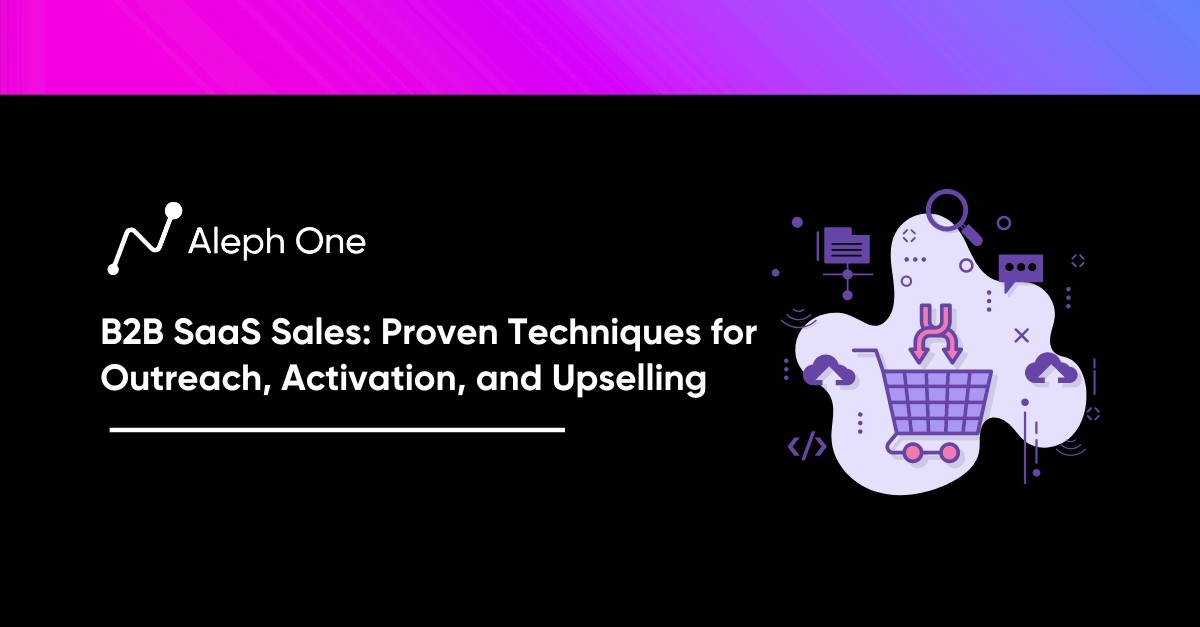Let’s work together to build something amazing. Share your project details and our team will reply to figure out the next steps to your success.

Overspending on unused licenses, fragmented purchasing, and lack of visibility into usage are common pitfalls in SaaS expenditures. In this comprehensive guide, we go into the strategies and tools startups can employ to optimize SaaS spending, ensuring that these essential tools drive growth without eroding profit margins. From establishing approval processes and policies to conducting audits and embracing SaaS management platforms, we offer a roadmap for startups to navigate the SaaS landscape efficiently, control costs, and scale successfully.

The Growth of SaaS Adoption (And Expenses)
The rise of software-as-a-service (SaaS) has transformed the way businesses operate. SaaS allows companies to access software applications over the internet through a subscription model, eliminating the need for costly on-premises installations and maintenance. This flexibility and convenience have fueled explosive growth in SaaS adoption across all industries. According to Blissfully’s 2019 SaaS Trends report, the average number of SaaS apps used by companies under five years old is a staggering 137. Compared to large enterprises, startups use 3x more SaaS apps on average.
Efficiency of the Subscription Model
The reasons for startups’ affinity for SaaS are clear. The subscription model allows access to powerful software requiring a significant upfront investment. SaaS also enables flexibility – startups can add or remove tools as needs change. The ability to get started quickly is particularly beneficial for young companies still proving their business models.
New Challenges for SaaS Companies
But while SaaS offers significant advantages, it also comes with new challenges – especially around expenditures. According to Blissfully, annual recurring SaaS costs for companies under five years old average over $343,000. And that figure is growing at a compound annual rate of 40% yearly.
Startups Overspend on SaaS Licenses
With such an array of new tools and subscriptions available, it’s easy for startups to overspend on SaaS licenses. A survey by Apptio found that 30% of SaaS spend is wasted at the average technology company. As startups rapidly snap up the latest and greatest apps, controlling costs is increasingly difficult.
SaaS spending can quickly spiral out of control without proper oversight and management. But with the right systems and processes, startups can optimize their SaaS usage to power growth without killing margins. The following sections provide a blueprint for startups looking to realize the benefits of SaaS while keeping costs in check.
Hidden Dangers: Common Pitfalls That Lead to Overspending
It’s easy for startups to fall into common traps that result in runaway SaaS spending. SaaS costs can quickly spiral out of control without proper oversight and control. Here are some of the most common pitfalls that lead to overspending:
Too Many Subscriptions
The more SaaS applications a company uses, the harder it becomes to keep track of subscriptions and usage. Startups often need more visibility into what SaaS apps employees use across departments. Before you know it, you’re paying for subscriptions that are hardly used or have been forgotten.
Fragmented Purchasing
Businesses often purchase their subscriptions without considering overall business needs. This leads to multiple groups buying redundant apps that provide overlapping functionality. With purchasing fragmented across the organization, it becomes nearly impossible to consolidate spending.
No Visibility Into Usage
Most startups need a firm grasp of how their SaaS applications are used. With visibility into usage and adoption metrics, it’s possible to determine if subscriptions are underutilized or delivering ROI. This results in renewals of apps that provide little value.
Paying for Unused Licenses
Startups often overpay for SaaS subscriptions by purchasing more licenses than they need. Licenses go underutilized when employees leave or switch roles. Usage usually declines over time, but licenses are renewed yearly at the same levels. Right-sizing licenses based on use can yield significant cost savings.
Without addressing these common issues, SaaS costs will continue to grow exponentially while delivering diminishing returns. Startups must implement oversight measures and optimize purchasing workflows to avoid overspending pitfalls.
Establishing Guardrails: Approval Processes and Policy for Purchases
As startups scale quickly, it’s easy for employees to spin up new software subscriptions without considering the full financial implications. Before you know it, your company is locked into multiple redundant or unnecessary SaaS products, draining cash.
Approval Workflows
That’s why it’s critical to establish guardrails in the form of structured approval workflows and company policies to optimize SaaS purchasing. This ensures complete visibility into new software acquisitions and alignment on their necessity.
Cross-functional Approval Process
First, implement a cross-functional approval process for any new software purchase. For example, it requires approval from department heads in finance, legal, IT, and the requesting team before moving forward. Finance weighs the cost/ROI, legal reviews terms and compliance, IT assesses security and compatibility, and the business unit confirms strategic need.
Standardize Intake Form
Standardize this in an intake form that captures key details like cost, contract length, data security, and alternatives explored. This gives approvers a complete picture to make informed decisions. Require pre-approval for any contract renewals or price hikes.
Develop Company Policies
Second, develop company policies that guide SaaS procurement, especially around data security, access controls, and subscription length. For example, mandate SaaS apps meet minimum security standards, limit access to only employees needing them, and cap initial contract lengths at 12 months until value is proven.
Prevent Unoptimized Purchasing
Explicit policies like these prevent rogue or unoptimized purchasing. They also protect your startup’s data security, which is crucial. Approval processes and policies may seem excessive but will save significant costs. Industry data shows structured SaaS oversight leads to at least 17% lower software spend for the average startup.
The goal is not to slow progress or innovation. But guardrails will force teams to align on necessity and prevent waste. Implementing approval workflows and policies upfront will optimize your SaaS portfolio and avoid out-of-control spending.
Cutting The Fat: Streamlining and Reducing SaaS Expenses
Once a startup has gotten into the habit of overspending on software subscriptions, it can take time to rein things back in. However, taking the time to streamline your tech stack and reduce superfluous SaaS expenses is crucial. The savings can be substantial if done right. Here are some of the top ways to cut the fat from your startup’s SaaS budget:
Conduct an Audit of All Subscriptions
The first step is getting a complete picture of every SaaS subscription you currently pay for. Compile a list across departments and teams. For each one, note the monthly/annual cost, number of users, key features, and overall utility.
Identify and Eliminate Redundant Apps
Chances are you’ll find redundant applications during your audit that provide similar functionality. For example, you may have two separate project management tools or three different sales engagement platforms. Eliminate the duplicative tools.
Review Usage Data and Scale Down Licenses
Analyze usage data for each subscription to see if you are overpaying for unused licenses. For example, if you pay 50 Slack users but only 30 are active, scale down to cut costs. Trim excessive licenses.
Consolidate Around Core Tools
Rather than using a fragmented set of apps, identify the 1-2 core tools in each software category that best suit your needs. Consolidate subscriptions around these to simplify your stack.
Negotiate Costs with Vendors
Negotiate with the vendor if you have an exceptionally high-priced subscription you can’t eliminate. See if they will reduce costs in exchange for a longer commitment. Explain it is unsustainable.
Implement an Approval Process for New Software
To prevent further bloat, implement an approval workflow for new software purchases. This ensures there is a business need and no redundancy before purchasing.
By taking these steps, startups can significantly streamline their tech stack and reduce SaaS waste. The result is a simplified set of tools that tightly align with your startup’s needs and budget.
Choosing the Right Tools: How Software Can Optimize Spending
While diligently monitoring SaaS usage and expenditures can help startups control costs, the process becomes exponentially easier with the right software tools. SaaS management platforms provide enhanced visibility into subscriptions and spending across the organization, automate management workflows, and enable better decision-making. The leading options offer a combination of the following capabilities:
SaaS Spend Visibility
A unified view of all software subscriptions, usage, and associated costs. This insight enables spending optimization by providing the complete picture. Features like custom tags and reporting allow slicing data.
Subscription Optimization
Automation for tasks like license management, renewals, and contract negotiation. This saves manual work while getting ideal terms. Capabilities like usage-based purchasing match licenses to needs.
Workflow Automation
Streamlining processes like approvals, provisioning, and more to govern purchasing. It prevents overbuying and enforces guardrails.
Cost Monitoring
Ongoing tracking of expenditures versus budgets. Alerts notify of overages or changes. Helps identify waste and opportunities to reduce spending.
Vendor Management
Centralized view of all vendor contracts and spending. Supports better negotiation leverage and decisions on renewals.
Blissfully, Zylo, Apptio, and Intello
Top platforms in the space include Blissfully, Zylo, Apptio, and Intello. SaaS-based pricing ranges from $3-10 per user/month. According to Blissfully, the average customer saves 18% on SaaS costs. Zylo cites typical savings between 15-30% from license optimization and reduced spending.
Create a SaaS Management Platform for Your Startup
The right SaaS management platform pays for itself many times over through enhanced visibility, control, and automation. While needs and budgets may differ, high-growth startups should evaluate these tools to optimize their SaaS spend. Implementing software early allows startups to establish control as their tech stack expands, avoiding overspending pitfalls down the road. The data and guardrails implemented enable businesses to scale their software usage efficiently.
FAQ
How can startups strike a balance between leveraging the benefits of SaaS offerings and managing the associated costs effectively?
Startups can leverage the benefits of SaaS while managing costs effectively through several strategies. Firstly, they can adopt a stringent approval process for any new software purchases to ensure it is necessary and aligns with the business’ strategic requirements. Secondly, they can develop company policies guiding SaaS procurement to prevent unoptimized purchasing. Lastly, regular audits and reviews of SaaS usage can help identify any underutilized or unused applications, allowing for cost savings through efficient usage.
What strategies can startups adopt to reduce SaaS-related expenses without undermining their operations?
To reduce SaaS-related expenses without compromising operations, startups can streamline their tech stacks by eliminating redundant applications. Regular reviews of usage data can help identify instances where software licenses may be downgraded, which can substantially cut costs. Additionally, by implementing an approval workflow for new software, businesses can prevent additional bloat and ensure efficient spending.
What are some top SaaS management platforms startups can utilize to optimize their SaaS spend and manage their tech stack efficiently?
Several SaaS management platforms can help startups optimize their SaaS spend and manage their tech stack efficiently. Blissfully, Zylo, Apptio, and Intello are leading names in the space, offering features like SaaS spend visibility, subscription optimization, workflow automation, cost monitoring, and vendor management. These platforms provide enhanced visibility, control, and automation, which can lead to considerable cost savings. Hence, early implementation of such platforms can help startups establish control over their scaling tech stack and avoid overspending.
Get the latest news and updates from Aleph One in your inbox.



